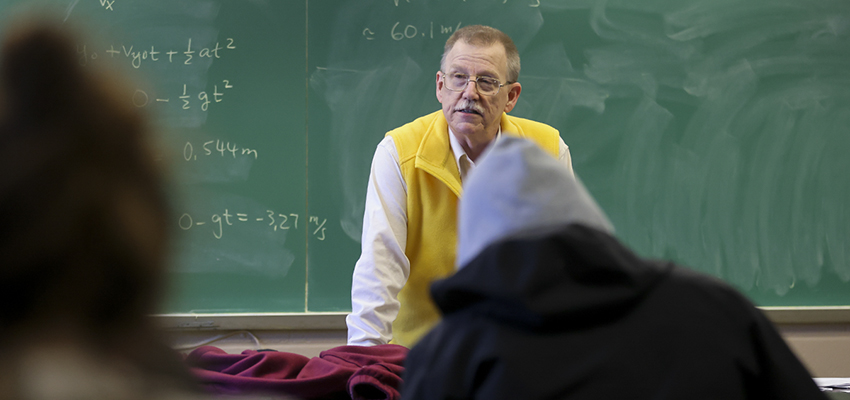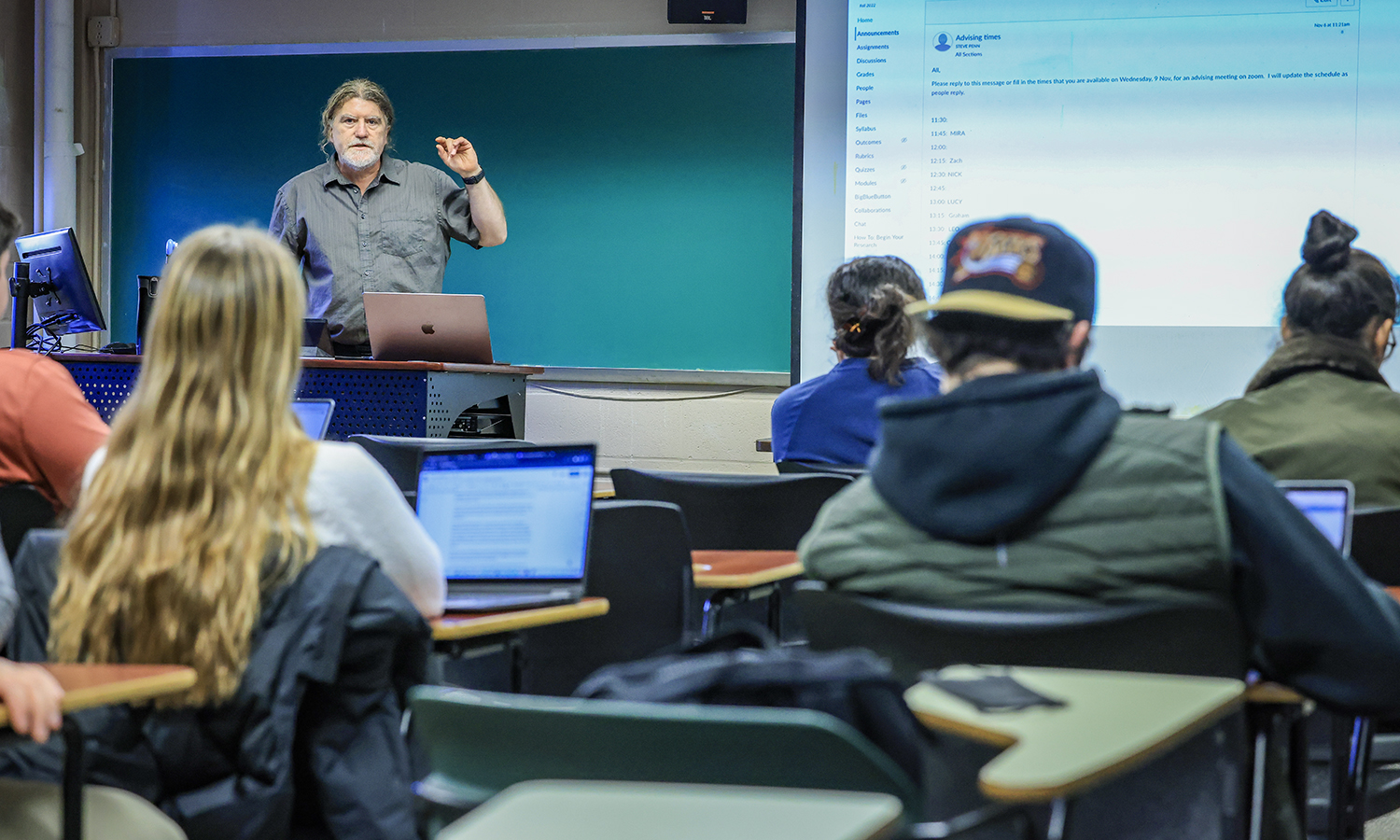
HWS News
1 June 2022 • Faculty Atomic Physics with Prof. Allen
In 2021, the Journal of Mathematical Physics published an article by Associate Professor of Physics Ted Allen, “Spin in Schrodinger-quantized Pseudoclassical Systems.” Here, Allen breaks down his research, the questions behind it and where it might lead.
What’s the focus of your physics research?
One main thread in my current research centers on trying to construct a simple quantum mechanics for the motion of quarks that are bound together to form particles, such as the protons and neutrons that compose atomic nuclei. More specifically, I’m interested in the motion of quarks and the behavior of their spin in subatomic particles called mesons, which consist of a quark and an anti-quark bound together by the strong nuclear force. The strong nuclear force is described by the theory of quantum chromodynamics, which is very complicated and far from being completely understood. Mesons serve as simple models for studying the strong force, much as the hydrogen atom serves as a model for understanding atomic physics of atoms more generally.
How does your research connect to your teaching?
My research overlaps somewhat with some of the courses I teach, specifically PHYS 352: Quantum Mechanics and PHYS 351: Mechanics. My article in the Journal of Mathematical Physics is a continuation of work published there a year earlier, which was work done with my student Chris Wilson ’16, now a graduate student at Cornell, and with my departmental colleague Professor Don Spector.
Regarding the article in the Journal of Mathematical Physics, what questions did you set out to answer, and what are the implications of your findings?
The article set out to answer — and answered — the question of the correct spin angular momentum when spin is described by mathematical objects called Grassmann numbers, which are generalized numbers wherein a times b is the negative of b times a. This question came up because of the mathematical tools I use to describe the spin of quarks in mesons. In 2003, I and my collaborators, M.G. Olsson and J.R. Schmidt, found a consistent classical theory for the motion of quarks bound together by the strong force that we published in Physical Review D. This theory has resisted all our efforts at creating a quantum version of the theory since then. My latest article in Journal of Mathematical Physics is one step along the way.
Allen holds a Ph.D. in theoretical physics from Caltech. His research interests include theoretical physics, QCD String Theory and the quantization of constrained systems. Learn more about the HWS Physics Department.



